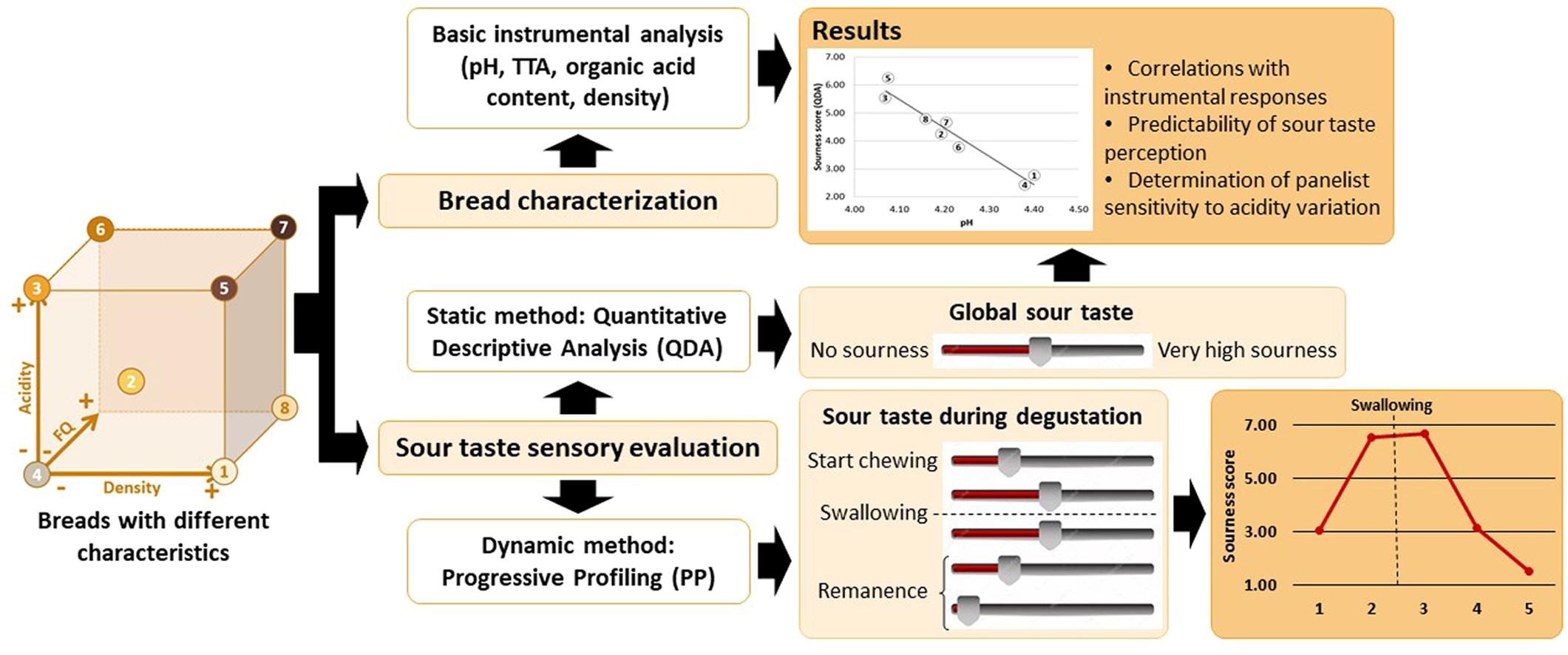
Can instrumental characterization help predicting sour taste perception of wheat sourdough bread?

Interesting looking paper. I haven't yet been able to get the full content via my university library.
Can instrumental characterization help predicting sour taste perception of wheat sourdough bread?
Highlights
• Breads with differences in acidity, FQ and density had similar sour taste profiles.
• Bread pH explained up to 97% of sour taste variations.
• Trained panellists were sensitive to pH-variations as low as 0.13 pH-unity.
• Bread-making process had at least as much impact on final product than sourdough.
• QDA and progressive profiling gave matching and complementary results.
Abstract
Sourdough bread is known to have a characteristic sour taste. To guarantee consumer acceptability, sour taste should be monitored to assure constant bread quality. However, little is known about bread sour taste perception, especially how it evolves during tasting, neither if some simple measurements could help predict it. The aims of this study were to characterize the evolution of sour taste perception during bread tasting and to determine which bread instrumental variables can be correlated to it. For that purpose, eight types of bread were made with different sourdoughs and baking processes to obtain wide ranges of acidity, density and Fermentation Quotient. Bread were characterized by instrumental methods (i.e. pH, Total Titratable Acidity, organic acid content and density measurements) and their sour taste was determined by Quantitative Descriptive Analysis and a dynamic method called Progressive Profiling. As a result, it appeared that breads were perceived as significantly different throughout tasting. The “sour taste profile” was globally similar among breads with the highest intensity reached at the swallowing point. Progressive Profiling seemed then an efficient and simple method to evaluate the intensity of food organoleptic properties as well as the persistence after swallowing. Surprisingly, bread acetic acid content and Fermentation Quotient showed no effect on sour taste perception. Conversely, from all the physicochemical characteristics monitored, bread pH correlated with sour taste the most, explaining up to 97% of sour taste variations. Measuring bread pH could therefore constitute a quick and easy way to predict bread sour taste perception in research and industry. Graphical abstract Dow


Hi Gary,
I have access to this paper through my institution. Send me a PM and I can provide a link.
Michael
Gary, let us know what you find out. From the summary it seems to suggest ph is the determining factor.
The highlights posted above tell you most of what you (I) want to know. Here is a bit more that I found interesting.
I was surprised at the amounts of "sourdough" (I assume starter) they used.
Seems like a carefully done study. The "Progressive Profiling" was new to me; I'm amazed you could get people to report that finely on their perceptions.
Seems like the French rule makers knew what they were doing.